Rug and Furniture Color and Pattern Impact on Interior Design
Contents
The Power of Colors in Interior Design
When designing your living space, the impact of colors specially furniture color cannot be overstated. Colors play a pivotal role in shaping the ambiance and mood of a room. Every element contributes to the overall aesthetic, from the walls to the furniture. Let’s delve into the significance of colors in interior design.
Understanding Color Psychology
Color psychology plays a crucial role in interior design, influencing a space’s atmosphere, mood, and overall perception. Interior designers use colors strategically to create harmonious and visually appealing environments that align with the intended purpose of a space. Here’s how color psychology is related to interior design:
Setting the Mood
Colors have the ability to elicit particular feelings and establish a room’s general mood. For instance, cool hues like blue and green encourage a peaceful and quiet setting, while warm hues like red and yellow can produce a pleasant and lively atmosphere. When choosing color schemes, interior designers take the intended mood and the purpose of the place into account.
Creating Visual Interest
A well-thought-out color palette can add visual interest and depth to a room. Designers often use a combination of contrasting and complementary colors to highlight architectural features, furniture, and decorative elements. This can create a dynamic and visually pleasing interior.
Defining Spaces
Different colors can define and differentiate various areas within a larger space. For example, a lighter color may be used in a seating area to make it feel more open, while a darker color in a dining area can create a more intimate and enclosed atmosphere.
Enhancing Functionality
Color can be used to enhance the functionality of a space. For instance, in a workspace, calming colors might be chosen to promote focus and concentration, while in a dining room, warm and inviting colors can encourage social interaction.
Consideration of Lighting
Lighting conditions significantly impact the way colors are perceived. Interior designers consider natural and artificial lighting when choosing colors for a space. Vibrant color in natural light might appear different under artificial lighting, so designers consider the interplay between color and light to achieve the desired effect.
Reflecting Personal Style and Branding
Colors are a powerful tool for expressing personal style or reflecting a brand identity. In residential design, clients’ preferences and personalities are taken into account. In commercial spaces, colors may be chosen to align with a brand’s image, creating a cohesive and recognizable identity.
Psychological Comfort
Interior designers consider individuals’ psychological comfort when selecting colors. For example, bedrooms may feature calming and soothing colors to promote relaxation, while lively colors may be used in social areas to encourage energy and conversation.
Adapting Trends
Interior design trends often influence color choices. Designers may incorporate trending colors to give a space a contemporary feel, but they also consider the longevity of the chosen colors to ensure the design remains timeless.
Choosing the Perfect Rug: A Foundation of Design
Selecting the perfect rug is a crucial aspect of interior design, serving as a foundational element that can significantly impact the overall aesthetic and functionality of a space.
Rugs as Statement Pieces
A rug can be the focal point of a room, setting the tone for the entire design. Bold patterns and vibrant colors can add flair to a neutral space, while subtle tones contribute to a more understated elegance.
Harmonizing with Furniture color
It’s essential to consider how your rug interacts with the furniture color. Patterns and colors should complement each other, creating a cohesive look. Avoid overwhelming patterns that clash with your furniture, striking a harmonious balance instead.
The Versatility of Rug Patterns
Rugs come in various patterns, from classic geometric shapes to intricate floral designs. Experiment with patterns to add a unique touch to your space. Remember, the rug is not just a floor covering; it’s a work of art.
Embracing Pattern Diversity
“Pattern Diversity” in interior design is a concept that encourages the intentional use and blending of various patterns within a space to create visual interest and a dynamic design
Layering Patterns
Don’t shy away from layering patterns in your interior design. Mix and match different patterns, but ensure they share a common color palette. This creates visual interest without confusion.
Statement Furniture Pieces
Inject personality into your space with furniture that boasts bold patterns. A patterned sofa or chair can serve as a conversation starter and add a unique touch to your home.
Striking the Right Balance
Finding the optimal harmony among various design elements to create a visually pleasing and well-balanced space is very important.
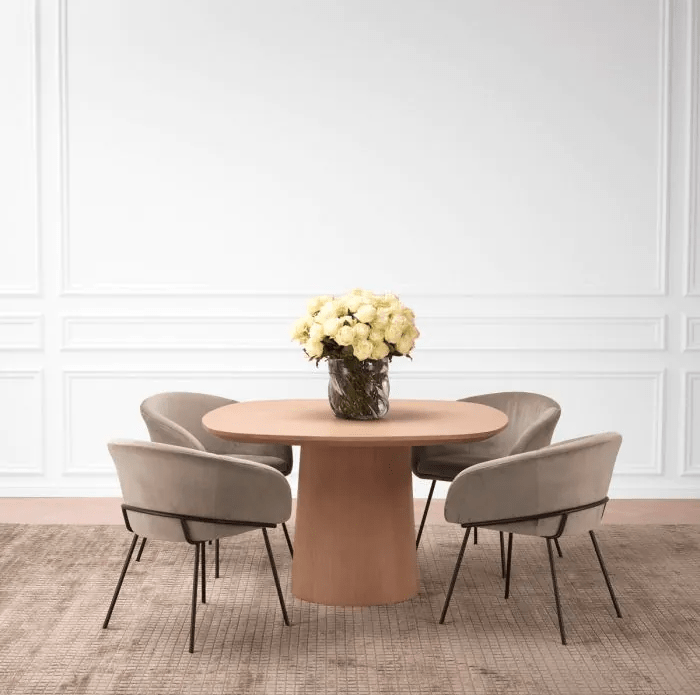
Achieving balance involves considering factors such as color, texture, pattern, scale, and placement.
Avoiding Overwhelm
While diversity is key, it’s crucial to strike a balance. Too many colors and patterns can overwhelm a space, creating a chaotic and stressful atmosphere. Choose a focal point and build around it, ensuring a cohesive and visually pleasing design.
Coordinating Colors and Patterns
The foundation of a well-designed place is coordination. Make sure the patterns and furniture color you select complement one another well. As a result, you get a well-curated look that matches your style.
Integrating in Furniture Color
Furniture color is a significant player in a room’s color scheme. Whether it’s a vibrant sofa or a classic wooden table, each piece contributes to the overall aesthetic. Choose furniture color that complements your chosen color palette.
Experiment with patterns in furniture color to add a dynamic element to your space. Striped chairs, floral cushions, or patterned throws can elevate the design and create a visually interesting composition of furniture color.
Exploring Patterns in Detail: An In-Depth Look
An in-depth exploration of patterns involves understanding their characteristics, types, and how to effectively incorporate them into a design scheme.
Geometric Patterns
Geometric patterns are timeless and versatile. They can add a modern touch to a space or complement a more traditional setting. Consider geometric rugs or furniture pieces for a sophisticated look.
Floral and Nature-inspired Patterns
Bring the outdoors inside with floral and nature-inspired patterns. These patterns add a touch of freshness and create a serene atmosphere. It is ideal for spaces where a connection with nature is desired.
FAQs
Mixing patterns can add visual interest and personality to a room. However, it’s essential to do so thoughtfully. Consider varying the scale of patterns, sticking to a cohesive furniture color palette, and balancing busy patterns with more subdued ones to create a harmonious and well-designed space.
When choosing a rug, consider the size of your room, the furniture color and layout, and the overall style you want to achieve. A larger rug can anchor furniture in a seating area, while a smaller one might be suitable for defining a specific zone. Additionally, ensure the rug’s color and pattern complement the room’s overall color scheme and design aesthetic.
Not necessarily. Mixing furniture colors and patterns can create depth and visual interest in a room. However, it’s crucial to maintain a sense of cohesion. You can achieve this by sticking to a furniture color palette or choosing patterns that share similar tones. Different furniture finishes and fabrics can create a more eclectic and personalized design.
Colors and furniture color can significantly impact the perception of room size. Lighter colors like whites and pastels tend to make a room feel larger and more open as they reflect light. On the other hand, darker colors can create a cozier and more intimate atmosphere but may make a space appear smaller. The use of mirrors and strategic lighting can also influence the perceived size of a room.
A focal point is a key element in a room that draws attention and serves as a visual anchor. It could be a fireplace, artwork, or a striking piece of furniture. A well-chosen focal point adds interest and helps guide the design of the space. It provides a focal area for the eyes to rest upon and can set the tone for the overall design scheme, contributing to a cohesive and well-balanced interior.
Conclusion
In the realm of interior design, furniture colors and patterns wield immense influence. The interplay between rugs, furniture, and the broader color scheme shapes the character of your living space. Remember, the key is to balance, creating a harmonious and visually captivating environment.
Visit our showroom at Diamond Rug Gallery to make your decision about harmonious furniture and rugs.

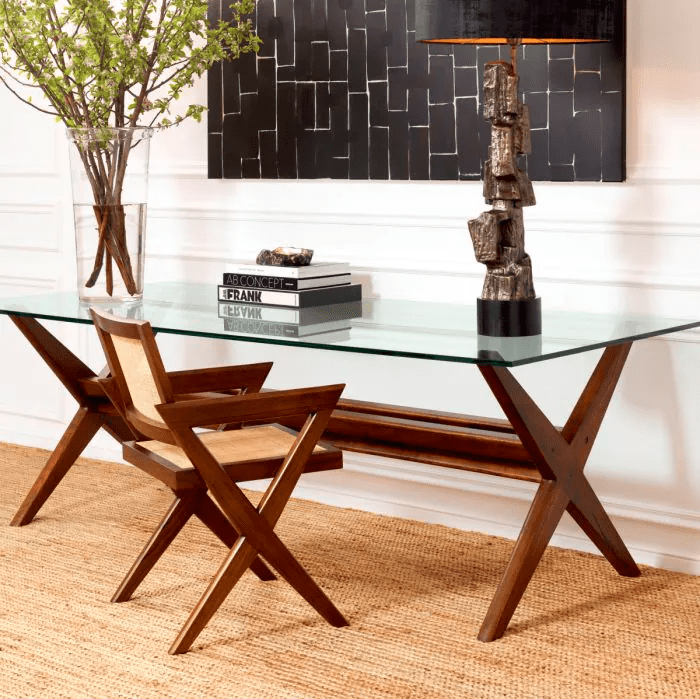
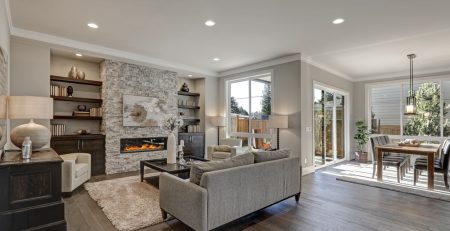
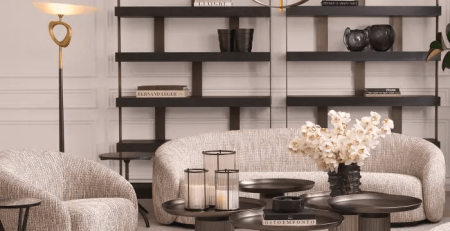
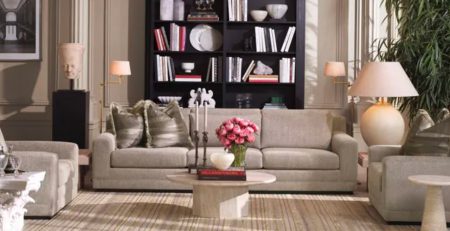
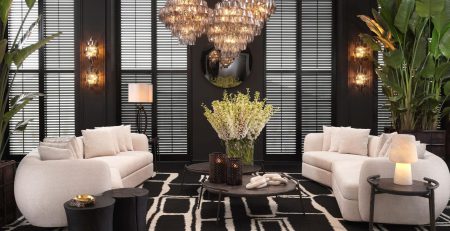
Leave a Reply